In this post I would like to establish the fact that the ‘Bantu’ branch of Africans, generally concentrated in Sub-Saharan part of the continent, and their related family branches are actually descendants of the Hebrew Israelites. Identifying the Bantu as the descendants of the Israelites extremely important. Having the understanding that the Bantu are Israelites is integral in order to gain a broader and more accurate comprehension of who the Israelites are, where their descendants are located, and what contributions they have made to the world.
Many of us are already very familiar with the Zondervan’s Bible Dictionary’s Ham (son of Noah), definition. Those who are not, please become soon familiar with it. However, again, for those of use who are already familiar with the Zondervan’s Bible Dictionary definition of Ham, we know that by it [the definition of Ham] we know that the Negroes are not Ham’s (true African) descendants.
In fact, the historical mythology and traditions of the Yoruba people themselves speak of their origins outside of Africa in the Near East (Shemitic) region. Dierk Lange, Prof. Dr. Emeritus, of Bayreuth University in Germany, has performed extensive research concerning many West African groups and their origins in the Near East. In the abstract to one of his many essays, “Dierk Lange: Origin of the Yoruba and “The Lost Tribes of Israel”,” Dierk confirms the traditions of a Levantine (Israelite) origin of the Yoruba Nigerians.
“On the basis of comparative studies between the dynastic tradition of the Oyo-Yoruba and ancient Near Eastern history, the present article argues that Yoruba traditions of provenance, claiming immigration from the Near East, are basically correct. According to Ọyo-Yoruba tradition, the ancestral Yoruba saw the Assyrian conquests of the Israelite kingdom from the ninth and the eighth centuries B.C. from the perspective of the Israelites. After the fall of Samaria in 722 B.C.., they were deported to eastern Syria and adopted the ruling Assyrian kings as their own.” – Origin of the Yoruba and “The Lost Tribes of Israel”, By Dierk Lange

The great migration of refugees from the collapsing Assyrian Empire c. 605 b.c. according to Yoruba tradition.
Dierk continues in the same article, stating that the Yoruba, although thought to be of local (African) origins actually migrated to the west coast of Africa from far away (the Mediterranean, the Middle East, and/or Egypt/Nubia). The Yoruba preserved evidence of their ancient Near Eastern (Israelite) ancestral origins despite other cultural influences and traditions superseding their own in Africa over time.
“According to the present opinion, the Yoruba are of local origin [African/Hamite], but this opinion reflects the great influence of post colonialism on African historiography rather than sober text-critical research. It involves the fallacious dismissal of the major traditions of provenance suggesting an origin of the ancestral Yoruba in the Near East. In fact, before the rise of academic African historiography in connection with the independence of African states around 1960, scholars relied more directly on the available traditions of Yoruba origin and they did some comparative research between Yoruba, ancient Mediterranean and Israelite cultures. On the basis of this evidence they suggested that the Yoruba immigrated from far away: either from Phoenicia, the Mediterranean world, Egypt, or Nubia (Biobaku 1955: 8–13; Lange 1995: 40–48). If any of these suppositions could be shown to be true and present opinion to be ideologically biased, it would mean that a culture of the ancient world survived in sub-Saharan Africa, which in the area of origin was superseded by subsequent sweeping developments such as Hellenization, Christianization and Islamization (Lange 1995, 1997, 1999).”
The Ibo people of Nigeria are also known to be descendants of the ancient Hebrew Israelites.
“These be the sons of Leah, which she bare unto Jacob in Padanaram, with his daughter Dinah: all the souls of his sons and his daughters were thirty and three. And the sons of Gad; Ziphion, and Haggi, Shuni, and Ezbon, Eri, and Arodi, and Areli.” – Genesis 49:15-16
This information is noteworthy because it identifies two of the primary tribes of the Niger-Congo branch of West Africans, the Yoruba and Ibo, as being “Middle Eastern”/Shemitic/Semitic Israelites that migrated into to Africa from territories outside of the African continent. The Bantu people are related to the Niger-Congo groups because it is from the Niger-Congo regions that the Bantu expansion originated.
In a separate article, Dierk Lange goes further to not just speak of the West Africans as having Near East cultural influences amongst them but he, and other members of the German culture historical school, also found similarities all over Africa.
“Members of the German culture historical school were convinced that states in West Africa originated in pre-Roman times as a result of Near Eastern or Mediterranean influences. They noted surprising similarities between the institutions of surviving traditional states all over Africa and therefore believed in a vast movement of diffusion.” – The Founding of Kanem by Assyrian Refugees ca. 600 BCE: Documentary, Linguistic, and Archaeological Evidence, by Dierk Lange
This vast ‘movement of diffusion’ of Near-East/Mediterranean influences all over Africa can be attributed to the consecutive migrations of Israelites into Africa. The earliest movements of diffusion are known as the “Bantu Expansion.”
So, in review, we can infer from the previous information that:
- Zondervan’s Bible Dictionary let’s us know that the Negroes are not Hamites (True Africans) but instead are from Shem (Middle Eastern). The Negroes are Shemitic
- Dierk Lange’s research has made it clear that the Yoruba of the Niger-Congo (Negroland) region are indeed Shemitic.
- The Niger-Congo people had a branch that diffused the Near-East/Mediterranean customs throughout the lands the migrated all over Africa during the Bantu Expansion.
Therefore the Bantu’s of Sub Saharan Africa are related to the Niger-Congo peoples who are Negros found in the African region (West Africa) identified as Negroland.
We know that the Bible Dictionary by Zondervan Identifies the Negro’s as Shemites and not Hamites.
The historical traditions of the Oyo-Yoruba people, as well as Prof.Dr. Dierk Lange’s research, along with countless other sources, support the information found in Zondervan’s Bible Dictionary concerning the Negroes Shemitic origins.
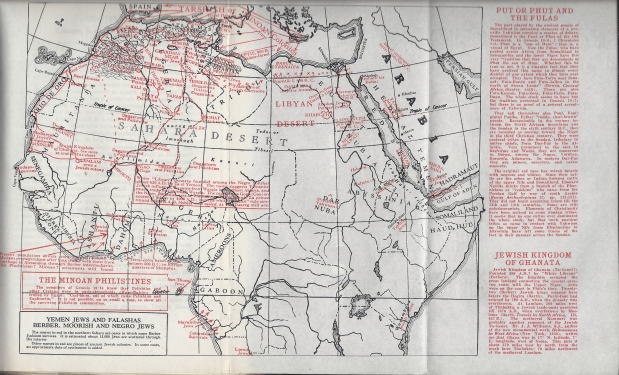
A map on page 257 of Allen Howard Godbey’s Lost Tribes a Myth, marking the location of some known Negro Jews in the African continent and the southern Mediterranean
Furthermore, the Negroes’ presence in the Western Hemisphere (North, Central, South America & the Caribbean) and Europe as a result of the Trans-Atlantic slave trade, which was a direct result of the biblical prophesy recorded in the book of Deuteronomy, chapter 28.
This prophesy of the curse of Antebellum Slavery (as the thought of the word ‘slavery’ appears in the mind of the American Negro), is recorded in all it’s details in the book of Deuteronomy (28:15-68), and it was spoke by Moses to the children of Israel/Jacob (the Israelites). The curse of slavery is a sign (Deut 28:46) to identify who are the descendant of the Israelites for it was the Israelites who received the curses as a result of their choice to disobey the laws and agreement made with the Most High god between himself and the Israelites ONLY. Therefore, we Negroes in the western hemisphere, whose most recent ancestors were taken primarily from the west coast of Africa (Negroland) and brought into bondage are indeed the Israelites.
The Shemitic Negro, who took up residence in Africa and there became known as the Niger-Congo Bantu, among infinite alternative tribal epithets, is the Israelite through lineal-heritage.
This fact makes the Negroes of the Western Hemisphere Israelites by lineal descent as well.
For those who are reading this post and immediately are concerned and thinking about the Negroes relation to the Egypt and (or) Ethiopia, Egypt and Ethiopia will be addressed in a separate post. The Moors will also be addressed in a separate post. The Moorish Negro period of history and especially the ancient Egyptian and Ethiopian Negro histories are all both essential and complimentary to the history of Israelites. The understanding of the Negro presence and contributions while living amongst Hamitic nations (Egypt/Mizraim/Mizor/Misor & Ethiopia/Cush/Kush) is important to understand the greater diaspora of Israelite communities.
The records of the Hebrew Israelites in the Bible say that the Israelites would be scattered throughout the four corners of the Earth. Most of the Negroes in the Western Hemisphere are only familiar with the West and the Trans-Atlantic Slave Trade but not many people are familiar with the East African Slave trade.

Indian Ocean Slave Trade dominated by the Arabs (Ishmael) transporting Israelites as far east as China.
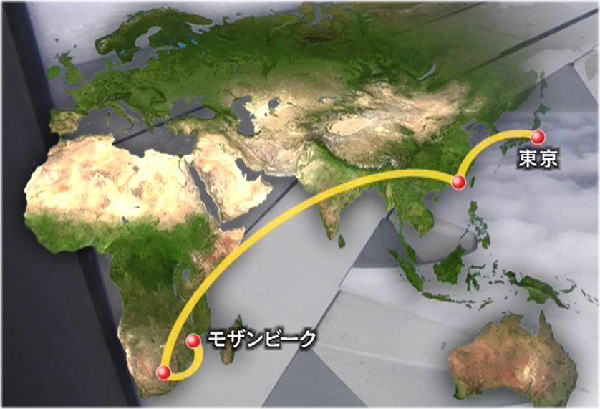 Understanding that the Negroes = Bantus = the Israelites is a critical point to realize because it connects us to the mysteries of the East. Just as we are familiar with the West African ‘Negroland’ that the ‘Ameri-Caribo’ Negroes are descended from we must also become familiar with the East African Negroland. The East African Negroland was known as Zanj, which means “land of the Negroes” in Arabic. Zanj is populated by Bantu people as well, of course, therefore making them also Israelites.
Understanding that the Negroes = Bantus = the Israelites is a critical point to realize because it connects us to the mysteries of the East. Just as we are familiar with the West African ‘Negroland’ that the ‘Ameri-Caribo’ Negroes are descended from we must also become familiar with the East African Negroland. The East African Negroland was known as Zanj, which means “land of the Negroes” in Arabic. Zanj is populated by Bantu people as well, of course, therefore making them also Israelites.
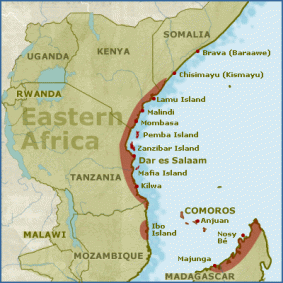
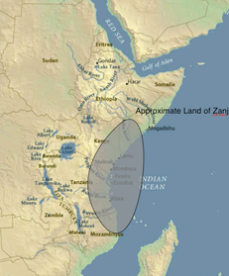
The histories of the Bantu Israelites of the East African Zanj will lead us to many connections between the Bantu Israelites and the Far East. Again, the understanding that the Niger Congo = Bantu/Zanji = Negroes = Israelites is imperative to understand the origins of many mysteries of the Far East so that we might have a better eye to see Israelites in all four corners of their dispersion and trace them through history.

Israelites migrate from ancient Israel into East African Zanji areas
The East African Zanji, who were mainly enslaved by the Arabs, were sent to places like India, Java, and China as servants but prior to the period of slavery the Zanji travelled to the same lands are merchants, mercenaries, farmers and among many other professions. In fact, history seems to demonstrate that the Bantu Israelites brought civilization from the African continent and the Near East, and introduced it to the Far East. When I say civilization, I mean things such as advanced iron smelting techniques and agricultural practices (rice terraces),; herbology and the foundations of Dravidian and Chinese traditional medicine, irrigation, architecture and more.
In order to make further distinction between the Shemitic Negro and the Hamitic African, let’s return back to the Zondervan’s Bible Dictionary definition of Ham. The definition states that Ham was the “progenitor (father) of the dark races; not the Negroes, but the Egyptians, Ethiopians, Libyans and Canaanites.” The ethnographic world map below, found in a 1932 German encyclopedia, provides great visual support to the Zondervan’s definition of Ham. The map makes a clear distinction in Africa between the Hamite (Hamiten) and the Sudan/Bantu Neger. Both the Sudan and Bantu Neger (Sub-Saharan Negros) fall under the Negroide Rasse (Negro Race) classification.
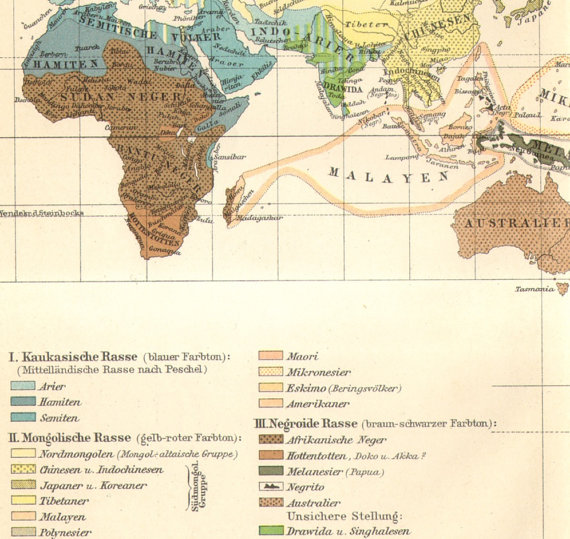
A German 1932 ethnographic map (Meyers Blitz-Lexikon) clearly showing a distinction between the Hamite (Hamiten) and the Negro/Israelite of sub Saharan Africa (Negroide Rasse).
It is also interesting to note that the Sudan/Bantu Negers are on the map highlights the same areas that are identified as areas of the Niger-Congo and Bantu peoples, whom are Israelites. Thus, it becomes of further intrigue, if we understand that the Hamite is not the Negro, and that the Negro is the Israelite, that on this particular map under the Negro Race classification we can find other racial groups outside of Africa that are also classified and related to the Negro Race. Groups such as the Hottentotten, Melanesier, Negrito, Australier, and the Dravida, are all listed as part of the Negro Race and are strongly connected with East African trade routes and the Zanji Bantu Israelites. This map helps to demonstrate the connection between the Zanji/Bantu all the various places along the eastern trade routes.
Sub-Saharan Africa is the region of the continent with the highest population density of by Negroes (non-Hamitic African). These Negroes have also been identified as Israelites. The research of scholars corroborates the biblical records of the Hebrew Israelites, which also states that Sub-Saharan Africa would be an area inhabited by the Israelites.
“From beyond the rivers of Ethiopia my suppliants, even the daughter of my dispersed, shall bring mine offering.” – Zephaniah 3:10
The Bantu are the Israelite suppliants who will bring the offering of the Most High God I AM THAT I AM at the appointed time according to Biblical prophesy. Moreover, the previous scripture calls the Israelites the daughter of God’s dispersed, referring to their dispersion/diaspora as a result of various captivities of the Israelites. Many of the traditional histories of sub Saharan Bantu African’s speak their Near East origins before migrating into Africa (Yoruba, Lemba, Ashanti, Etc.). This traditional histories serve as further evidence that supports the biblical record’s account of the dispersion of the Israelites into all parts of the earth from their homeland; Israel. Bantu’s are not Hamitic but are actually Israelites and therefore Africa is not the “Motherland”. Israel is the Most High God’s Holy land and the Motherland of the Israelite nation.
“But Jerusalem which is above is free, which is the mother of us all.” – Galatians 4:26
The Bantu found in the sub Saharan regions of Africa as a result of what historians have called the Bantu expansion. The Bantu Expansion was a process by which the Bantu Africans separated themselves from the Hamitic Africans in the North and North Eastern parts of Africa. Their advanced knowledge of agriculture and working gave the Bantu the advantage over the indigenous Hamitic populations in Africa by allowing them to support large populations through the construction of advanced settled communities. As communities prospered and families grew, the initial areas of settlement became unable to support the abundance of people, animals and crops and thus the Bantu Expansion eventually colonized the whole of sub Saharan Africa. However, where did the Bantu gain the knowledge that allowed them to prosper and conquer the African continent? Egypt of course. Understanding that the Bantu are indeed the Israelites allows us to make the connection between the technological advances of ancient Egypt and the technologies that fueled the Bantu Expansion.
We know that the Israelites, according to the bible, lived in the land of egypt for a few generations before the famous Exodus under Moses’ leadership. The body of knowledge that provided the success of the Bantu Expansion (advanced metallurgy, animal husbandry, architecture, carpentry, agricultural, astrological, religious, etc.) was inherited by these Bantu from their Israelite ancestors during their long residence in Egypt. The Israelites gathered a lot of skills during their time in Egypt. They mastered these technical skills because they were forced to utilize their talents to build all of Egypt. Moreover, they were threatened with death or the death of their children if they did not perform to standard in their work of constructing Egypt. The threat of losing your life or your child’s is definitely motivation and incentive to master any and all task placed before yourself. Egyptian architecture and civilization is known to be some of the most advanced in the world. Some in fact, credit the mysteries of Egypt to ancient aliens because of the intricate precision of the ancient structures. According to the book of Jasher, the whole of Egypt, and namely the cities Pithom and Ramses, was built by the Israelites. The Israelites had mastered these skills to perfection because of the violent bondage and strict religion-based building codes of the Egyptians.
“And the children of Israel built Pithom and Rameses, and all the children of Israel did the work, some making bricks, and some building, and the children of Israel built and fortified all the land of Egypt and its walls, and the children of Israel were engaged in work for many years, until the time came when the Lord remembered them and brought them out of Egypt. But the children of Levi were not employed in the work with their brethren of Israel, from the beginning unto the day of their going forth from Egypt. For all the children of Levi knew that the Egyptians had spoken all these words with deceit to the Israelites, therefore the children of Levi refrained from approaching to the work with their brethren. And the Egyptians did not direct their attention to make the children of Levi work afterward, since they had not been with their brethren at the beginning, therefore the Egyptians left them alone. And the hands of the men of Egypt were directed with continued severity against the children of Israel in that work, and the Egyptians made the children of Israel work with rigor. And the Egyptians embittered the lives of the children of Israel with hard work, in mortar and bricks, and also in all manner of work in the field. And the children of Israel called Melol the king of Egypt “Meror, king of Egypt,” because in his days the Egyptians had embittered their lives with all manner of work. And all the work wherein the Egyptians made the children of Israel labor, they exacted with rigor, in order to afflict the children of Israel, but the more they afflicted them, the more they increased and grew, and the Egyptians were grieved because of the children of Israel.” – Jasher 65: 31-38
“And when Pharaoh king of Egypt saw that the counsel which Balaam had advised respecting the children of Israel did not succeed, but that still they were fruitful, multiplied and increased throughout the land of Egypt, Then Pharaoh commanded in those days that a proclamation should be issued throughout Egypt to the children of Israel, saying, No man shall diminish any thing of his daily labor.
And the man who shall be found deficient in his labor which he performs daily, whether in mortar or in bricks, then his youngest son shall be put in their place. And the labor of Egypt strengthened upon the children of Israel in those days, and behold if one brick was deficient in any man’s daily labor, the Egyptians took his youngest boy by force from his mother, and put him into the building in the place of the brick which his father had left wanting. And the men of Egypt did so to all the children of Israel day by day, all the days for a long period. But the tribe of Levi did not at that time work with the Israelites their brethren, from the beginning, for the children of Levi knew the cunning of the Egyptians which they exercised at first toward the Israelites.” – Jasher 69:4-9
Under pain of death the Israelites worked hard at their crafts to avoid punishment and later took their mastery of various knowledge outside of Egypt with them during their migrations. Evidence of this can be clearly demonstrated in the Bantu Expansion which will connect of to other places in the world connected to the Bantu Expansion that also hold evidences of the same connections to Egyptian knowledge as well.

Pyramids found around the world after the departure of the Israelites from Egypt but few to none were constructed in Egypt after the Exodus. – PHOTO by Richard Cassaro, author of Written In Stone
For more information concerning of some the knowledge on building and construction gained by the Israelites while in Egypt, check out SQUARING THE CIRCLE: FITTING INFINITE INTO THE FINITE

Through the understanding of the Israelites identification with the Bantu and related people of Africa, and their long residence in ancient Egypt, it will become much easier for us to make logical and historically accurate connections between the biblical records of the Israelites and modern secular historical, archaeological, and anthropological research. We will continue in PART II.

Question, comment, concerns?
CONTACT: NasiResearch@instruction.com
READ OTHER RELATED TOPICS
The American Indians are Israelites
Scythian Israelites of Assyria: Aryans in Africa & Abroad
Abraham and the Wisdom of the Egyptians
Israelite Fire Nation in China
Shennong: The Israelite Inventor of Chinese Culture

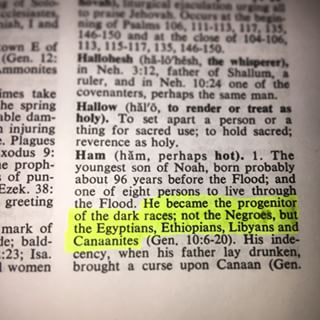











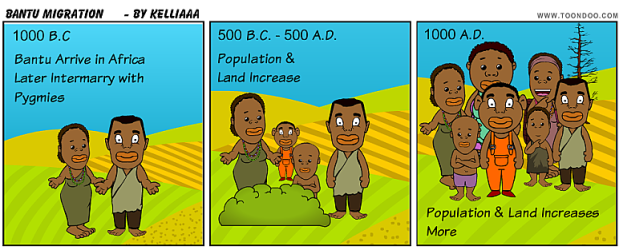
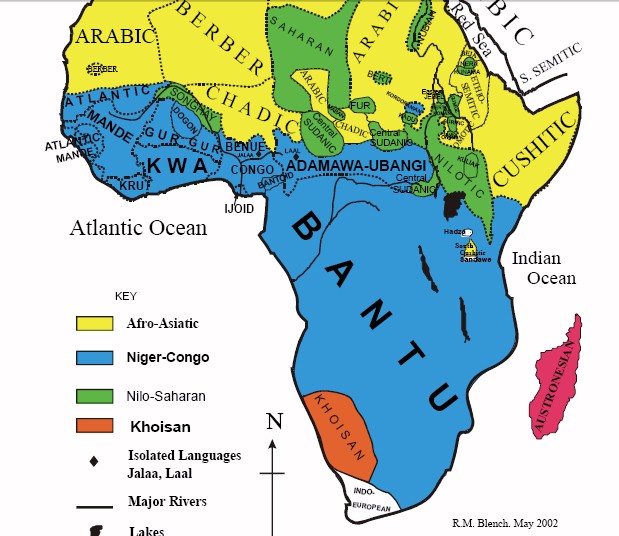



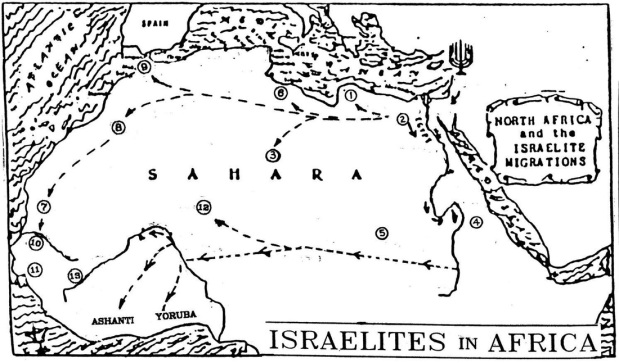








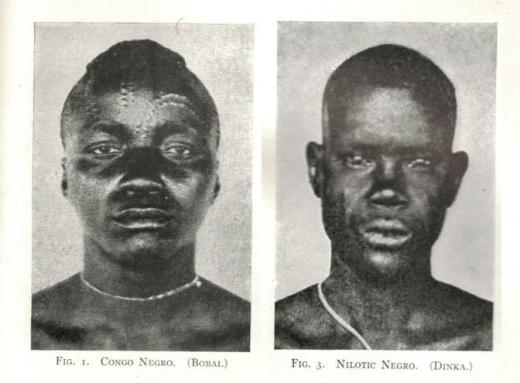




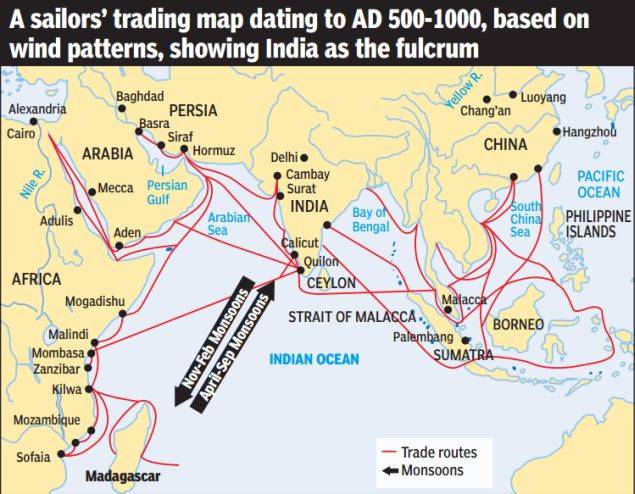






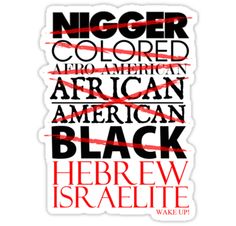
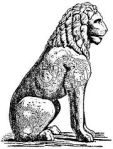

Hello everyone, it’s my first go to see at this site, and paragraph is truly fruitful for
me, keep up posting these types of content.
LikeLike
Good day! I simply wish to give a huge thumbs up for the nice info you could have here on this post. I will be coming again to your weblog for more soon.
LikeLike
Attractive section of content. I just stumbled upon your blog and in accession capital to assert that I acquire actually enjoyed account your blog posts.
Any way I’ll be subscribing to your augment and even I achievement you access consistently quickly.
LikeLike
Usually I do not learn post on blogs, but I would like to say that this write-up very forced me to try
and do it! Your writing style has been amazed me. Thanks, very
nice article.
LikeLike
Every weekend i used to pay a visit this site,
as i want enjoyment, as this this website conations actually good funny
information too.
LikeLike
What’s up, its good post on the topic of media print, we all be
familiar with media is a wonderful source of data.
LikeLike
I blog often and I seriously thank you for your content.
This great article has truly peaked my interest.
I am going to bookmark your blog and keep checking for new information about once a week.
I subscribed to your Feed too.
LikeLike
I will right away take hold of your rss feed as I can’t to find your email subscription hyperlink or e-newsletter service.
Do you’ve any? Kindly let me understand in order that
I may subscribe. Thanks.
LikeLike
some really prime content on this web site, saved to my bookmarks.
LikeLike
Hmm it looks like your site ate my first comment (it
was super long) so I guess I’ll just sum it up what I had written and say,
I’m thoroughly enjoying your blog. I too am an aspiring blog blogger but I’m
still new to everything. Do you have any points for first-time blog writers?
I’d really appreciate it.
LikeLike
Valuable information. Lucky me I discovered your web site by
chance, and I am stunned why this coincidence didn’t came about in advance!
I bookmarked it.
LikeLike
Good post. I learn something totally new and challenging on sites I
stumbleupon every day. It will always be exciting to read through content from other writers and use a
little something from their sites.
LikeLike
wohh exactly what I was searching for, regards for posting.
LikeLike
Valuable info. Lucky me I found your website accidentally, and I
am surprised why this accident didn’t came about in advance!
I bookmarked it.
LikeLike
I every time used to study paragraph in news papers but now as
I am a user of net therefore from now I am using net for articles or
reviews, thanks to web.
LikeLike
You could certainly see your expertise within the article you write.
The world hopes for even more passionate writers like you who are not afraid to
mention how they believe. At all times follow your heart.
LikeLike
Amazing issues here. I’m very happy to see your post. Thanks
a lot and I’m taking a look ahead to touch you. Will you please drop me
a mail?
LikeLike
I like this weblog very much so much great information.
LikeLike
This web site really has all of the info I needed concerning this subject and didn’t know who to ask.
LikeLike
As the admin of this site is working, no hesitation very shortly it will be famous, due to its quality contents.
LikeLike
I like this post, enjoyed this one thanks for putting up.
LikeLike
If some one needs expert view regarding running a blog
afterward i recommend him/her to visit this website, Keep up the fastidious job.
LikeLike
Hi, just wanted to mention, I loved this post. It was inspiring. Keep on posting!|
LikeLike
You made some decent points there. I did a search on the issue and found most individuals will go along with with your site.
LikeLike
Reblogged this on Loving YAH Daily.
LikeLike